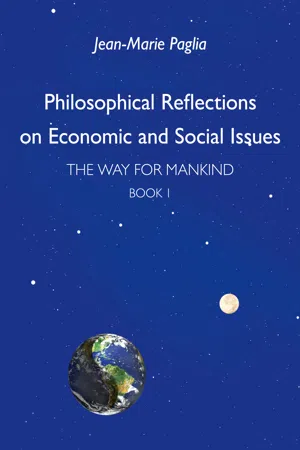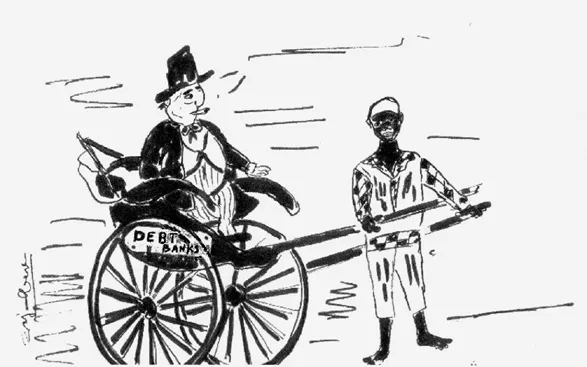![]()
1. A Quick Glance at the Planet
Let’s look at Mumbai. Here are a few details from an article in Le Monde Diplomatique : “India’s City of Gold.” (1)
“Many slum dwellers have built two or three lofts atop their hovels and rented them out. On average 10 people live in a single hut of about nine square meters. No one can estimate how many people live on Reay Road, but every single day the headcount increases and with it the chaos. To be honest, no one can even confirm how many people live in the city overall. Official surveys show that there are 12 million (more than Greece) and that half of them are homeless. But because of the endless stream of immigrants, the slum population, the hundreds of unregistered children born every day, it may be closer to 16 million […]
Many have come from far to settle in the City of Hope, convinced they would find jobs […] So they survive here, on the road, day after day, despite the pollution, heat, malnutrition, dirt, trucks and cars whizzing by, accidents, diseases, huge rats and crows, stinking gutters, the disgust of better-off passers-by and the monsoon floods […]
It takes a while to realize why it continues to attract so many outsiders who hope to make their fortunes here. It is overwhelmingly huge, hot, cramped, polluted, suffocating, crowded, traffic-choked, with appalling sights and smells of poverty and sickness. If you are poor, you live in inhuman conditions; if you are rich, the mafia bothers you. If you are middle-class, just leaving your house every morning is a struggle – fighting with traffic, negotiating potholes, trying to ignore tiny begging hands scratching your car windows.”
This account could equally well describe hundreds of cities around the world. It is evidence of the sorry state of our planet.
We are regularly kept abreast of the general state of the world. Here are a few examples from websites keeping an eye on the world’s problems – there are many sources of information at our disposal. Most of the figures quoted in this chapter come from the Global Issues website (2), which offers a very thorough analysis of the social, economic and political problems affecting our planet. Here is a brief rundown of the overall situation, a reality far easier to contemplate when it’s reduced to statistics:
Two billion people suffer from malnutrition, and 18 million starve to death every year.
Millions of people die each year from curable or preventable diseases.
1.3 billion people have no access to drinking water; 3 billion have no sanitation and 2 billion do not have electricity.
Poverty, hunger, malnutrition, disease, appalling sanitation and illiteracy haunt a large proportion of the world’s population. We could flesh out the description of this world of ours by mentioning child labor (25 million children are exploited in unacceptable working conditions), the terrible conditions for many women and the lack of respect for basic human rights.
It would be interesting to try and understand how we have managed to make such a mess of our existence and our dignity.
We human beings are real idiots.
The genesis of this global tragedy is largely the result of clashes between cultures. Over the last few centuries, Europe’s aggressive, mercantile cultures came into contact with peaceful subsistence economies. As we all know, these encounters were not harmonious – you only have to think about Conquistadors seizing gold, land, souls and people in the newly discovered “Indies”, or the slave trade – the buying and selling of human “ebony”. Cultural differences were too great to give rise to fair exchanges.
The tragedy of under-development appears to stem from those historical exchanges. Colonialism opened up vast territories that were exploited by rich countries. The colonized peoples found themselves in a state of economic inferiority, and they have remained in that state ever since.
Following the end of colonialism, strategic aspects of world trade have remained under the control of the dominant powers, notably thanks to gaining the allegiance of local elites.
It is the rich who decide upon trade regulations, shape international institutions and control information, and these trade advantages enable them to exploit resources for their own benefit, depriving the producing countries of their fare share.
Conditions imposed by international institutions upon poor countries maintain their dependence and under-development, as they favor trade which does not benefit the poorer countries.
Poor nations can no longer produce their own food and do not have the means to develop their own industries.
Free trade does not equal fair trade. Wealth continues to be transferred from poor countries to rich countries, and the weakest countries are forced to accept unfair deals.
What’s more, rich countries know how to protect themselves from imports which could harm their economies.
Poor countries urgently require investment in the areas of infrastructure, education and health before being able to establish fair trading conditions, but their efforts for self-development are crushed by the burden of debt, some of which dates back to colonial times.
A number of cause-and-effect relationships bind the two extremes of this human imbalance, and such bonds are rarely brought to light. Let’s examine debt as one such example.
Nations emerging from colonization started out indebted to their former colonial masters during the 1960s, and the debt has continued to grow ever since. Borrowed billions find their way back to the rich countries, which become even richer from this exchange. “The poor are subsidizing the rich” as they say. Debt continues to increase with compound interest, reaching dizzying heights, and the vicious cycle can only be broken by canceling the debt.
According to the Jubilee 2000 report by the World Bank, debt continues to grow despite larger payments, while the amount of aid is decreasing. International aid is down 20% from the 1990s, and countries which pledged a defined percentage of their GNP in aid have not kept their word.
For every dollar received in the form of aid, the Third World pays back 13 dollars. The production of wealth required by these countries for their own development is being siphoned off – in the 1980s real income fell by 60% in Mexico, 50% in Argentina, and 70% in Peru.
It is fortunate that we are not aware of all this; it would make us uneasy. If we were aware of it, on the other hand, and were not overly concerned, we would have to admit that we are essentially self-engrossed creatures, conscious only of our own interests and concerns.
And it should also be remembered that in the poorest countries, the people who have to repay such debts did not contract them in the first place. They never saw the money at all.
Kofi Annan, Secretary General of the United Nations, pointed out during a conference on October 30, 2003, that in the previous year developing countries had paid almost 200 billion dollars to third countries.
“Funds ought to be flowing from developed countries into developing countries, but the figures are telling us that the opposite is true. Funds which should be encouraging investment or growth in developing countries, or building schools and hospitals or supporting other measures for […] development, are, on the contrary, moving abroad.”
The United Nations development program estimates that transfers from South to North are worth $500 billion per year, while aid donated to the Third World totals around $50 billion.
According to the economist Manfred Max-Neef, developing countries subsidize industrialized countries to the tune of hundreds of billions of dollars every year. Max-Neef calculates that around $400 billion net are transferred from Latin America to industrialized countries. (3)
Ten years after the World Food Summit, which pledged to reduce by half the number of people suffering from malnutrition by the year 2015, no progress has been recorded and 854 million people still do not have enough to eat, according to the FAO annual report on food insecurity (October 2006.)
The world is what we make of it, and what we make of it also shows who we are. It has to be said that we have not managed to make a very decent world, nor one which we should be happy about. However, we are not particularly concerned about it – to us, such problems appear insurmountable and remote.
NB. The statistics quoted in this book may not exactly match the present-day situation. The regular information available will let the reader assess for himself whether significant changes have happened or not as the years went by.
![]()
2. Neoliberalism, the Principle of the Global
Economic Order
The fundamental economic rules governing our planet are well known, and are laid down by the most powerful nations who thus ensure they can obtain the best for their national self-interest. Over time, economic principles have evolved to some extent, while naturally remaining basically the same.
The neoliberal theory is based upon the idea of the greatest possible economic freedom within a system of triumphant capitalism.
The fundamental principle of free trade sees in a totally free market a magic wand capable of providing all the benefits one could possibly hope for; freed from state intervention, excessive regulation, price controls and the weight of the unions, free trade spurs on the economy. The free movement of goods, services and capital requires sustained growth.
The privatization of public companies ensures that they are efficient and profitable.
Free trade develops global commerce and enables every country to develop in turn. It guarantees the most just and most efficient distribution of resources.
Competition gives the system magical energy – healthy competition between countries, companies and individuals within companies encourages the success of the best and stimulates innovation, lowers prices and gets the best results. This sacrosanct competition is at the very core of every personal preoccupation – it is an expression of the survival principle, the ancestral expression of human activity.
What could be better than that?
As far as we can judge, it would seem that this system has indeed brought inestimable progress in many areas. Notably, globalization has meant that emerging countries have been able to get off the ground economically, as outsourcing brings jobs there, even if this remains a form of exploitation.
Obviously, this kind of economic activity distributes a certain amount of wealth and improves living standards, but not in a way that is satisfactory, efficient or balanced. The undeniable proof right in front of us is the current state of the planet and also in long-since developed rich countries where economic disparities have not disappeared with time, but persist and are often getting worse – a sure sign that this revered free market economy is not functioning well at all.
This economic activity does not meet the needs of the people, as half of us remain completely impoverished while a fifth of us consume almost all the world’s resources.
The article from Global Issue...


